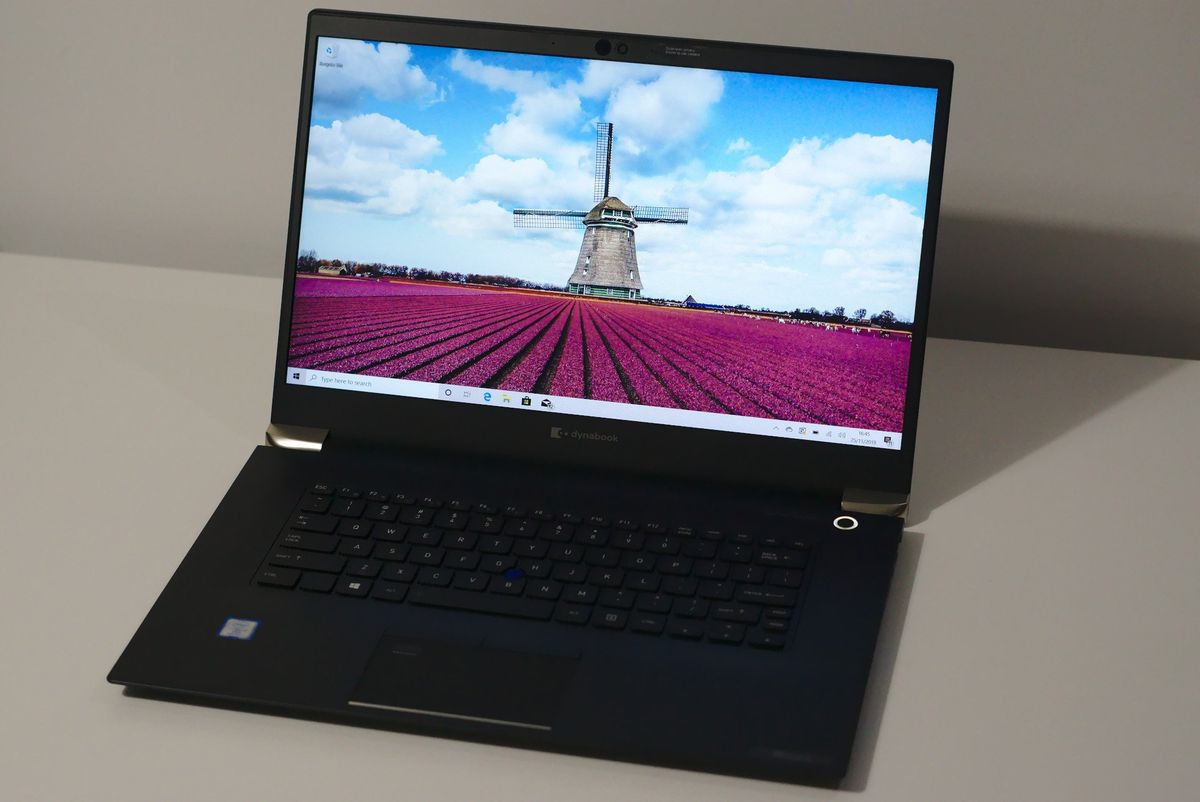Toshiba rebranded to Dynabook in the U.S. earlier in 2019, and the Tecra X50 is the company's offering, promising a premium design and build with long-term productivity thanks to capable hardware. While the company has provided much to the world of laptops, the Tecra X50-F is a great foundation, let down by a few questionable quirks and lack of polish.
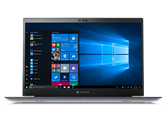
From $1,684Bottom line: Dynabook did a fine job with the Tecra X50-F, but it failed to bring to the competition a business machine to topple the giants.
For
- Lightweight
- Webcam shutter
- Comfortable backlit keyboard
- Thin chassis
- Solid performance
Against
- Rather dim display
- Battery life
- Noisy cooling
- Pricey
Dynabook Tecra X50-F tech specs
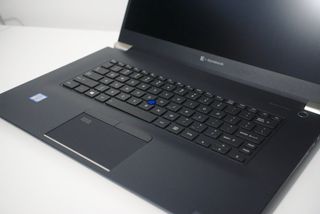
The Dynabook Tecra X50-F can be configured with a small selection of 8th Gen Intel processors with the Intel Core i7-8665U vPro being top dog. It's also possible to install up to 32GB of DDR4 RAM and a 1TB SSD, which doesn't sound too bad for a notebook of this size, but the starting price for this model (with just 4GB of RAM) is $1,684.
Dynabook supplied Windows Central with a review unit of the Tecra X50-F. The model I received was kitted out with an Intel Core i7-8665U processor, 16GB of 2400MHz RAM, 512TB PCIe NVMe SSD, and a Full HD display. Configuring a similar X50-F on Dynabook's website resulted in a laptop costing $2,379.
Here's a detailed breakdown of the exact specifications sported by the review unit I've played with for approximately a week.
| Category | Spec |
|---|---|
| Processor | 8th GenIntel Core i7-8665UUp to 4.8GHzFour cores/eight threads |
| RAM | 16GB DDR4-2400MHz |
| Graphics | Intel UHD 620 |
| Storage | 512GB M.2 PCIe SSD |
| Display | 15.6 inches1920x1080 (FHD)IGZO LCD, touch, glossy |
| Ports | 2x Thunderbolt 31x USB-A 3.0HDMI 1.43.5mm audiomicroSD card reader |
| Audio | Harman Kardon speakers |
| Wireless | Intel Wireless-AX200802.11axBluetooth 5.0 |
| Camera | Front-facing 720pWebcam shutter |
| Biometrics | Fingerprint reader (optional) |
| Keyboard | Backlit |
| Touchpad | Synaptics SecurePad |
| Battery | 48Wh |
| Dimensions | 14.1 inches x 9.08 inches x 0.69 inches(359 x 250mm x 17.5mm) |
| Weight | 3.13 pounds (1.42kg) |
Dynabook Tecra X50-F design and features



The Tecra X50 isn't a fancy 2-in-1, but instead is a traditional clamshell laptop. You've got a dual silver hinge design with a Full HD IGZO LCD display (touch is optional) with a magnesium alloy chassis. This does allow for the notebook to be considerably lighter than competitor products with similar specifications, measuring in at just 3.13 pounds (1.42kg).
The chassis is sturdy, and you have to put in some degree of force to get it to flex. Four rubber feet keep the laptop raised off the ground to aid in cooling and projection of sound emanating from the two down-firing speakers. On the sides of the Tecra X50-F, you have two Thunderbolt 3 ports that are used for data and charging, a single USB 3.0 Type-A, HDMI 1.4, 3.5mm audio jack, and a microSD reader.
The Tecra X50-F sounds good on paper, but even a fully kitted out model can't hide some flaws.
This port selection is rather generous, and because Dynabook utilizes the USB Type-C port for charging, you can use your own phone charger to top-up the battery if you'd rather not use the external brick provided with the laptop. Once you've supplied enough power to the laptop, like most electronics, it can be turned on, which left me flabbergasted when the power button keycap came off. I'm certain this is a unique issue to this particular review unit, but it wasn't a good start.
Because this is a notebook built for business, Dynabook offers hardware security enhancements like Trusted Platform Module 2.0 (TPM), its own proprietary BIOS, and optional smart card reader. There are also two optional biometric security features in the form of an integrated IR camera and a fingerprint reader for Windows Hello, the latter being a swipe reader part of Synaptics touchpad — more on that later.
Dynabook Tecra X50-F display
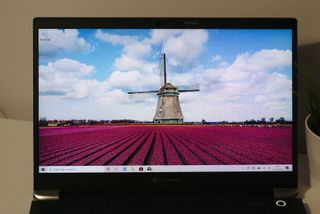
To Dynabook's credit, the Tecra X50-F comes with a power-efficient IGZO to get as much out of the battery as possible, which sounds like a great design choice, but this falls short in practice as I'll go over in performance and battery tests. Worse still, the panel barely produces any light, and the 1080p resolution looks dated on a 15.6-inch chassis. It's not awful, but not great at this price point.
The brightness result comes in at 250 nits, which is way bellow what competitor notebooks can reach. Color reproduction isn't too bad, coming in at 100% AdobeSRGB. This doesn't mean much in the business world, but word processing and other work-related tasks can be completed comfortably on the Tecra X50-F, just don't go expecting glorious media consumption unless you use an external display.
Dynabook Tecra X50-F performance and battery
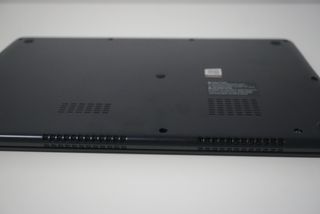
There's no 10th Gen Intel processor inside the Tecra X50-F we received, and Dynabook doesn't appear to offer the latest processors from Intel just yet. Still, the 8th Gen "Whiskey Lake" Core i7-8665U is no slouch. Paired up with 16GB of DDR4 RAM and a 512GB PCIe NVMe SSD, you can expect to see respectable performance, allowing you to get on with daily tasks in the office.
The base model of the Tecra X50-F does not share this luxury. If you pick the base model, you'll receive an Intel Core i5-8 and just 4GB of RAM. 4GB of RAM is shocking and would not allow you to run multiple apps comfortably, nor would you be able to run intensive software that require considerable amounts of system memory. If you need a machine to check emails, you're better off spending (less) money elsewhere, which makes this a strange decision to offer 4GB.
I ran some synthetic benchmarks to see how well the Tecra X50-F holds up against other laptops we've previously reviewed.
CPU
Geekbench 5.0 Benchmarks (Higher is better)
| Device | CPU | Single core | Multi core |
|---|---|---|---|
| Dynabook Tecra X50-F | i7-8665U | 1,241 | 3,043 |
| Dell Latitude 13 7300 | i7-8665U | 1,182 | 3,525 |
| Dell XPS 15 7590 | i9-9980HK | 1,176 | 7,624 |
| Dell Inspiron 13 7390 2-in-1 | i7-8565U | 1,111 | 2,965 |
| Dell Precision 3541 | i7-9750H | 1,117 | 4,720 |
There's excellent performance from the quad-core Whiskey Lake CPU here. You could opt for the Core i5 instead and still have the power to get through productivity work.
GPU
Geekbench 5.0 OpenCL (higher is better)
| Device | GPU | Compute score |
|---|---|---|
| Dynabook Tecra X50-F | Intel UHD 620 | 5,250 |
| Dell Latitude 13 7300 | Intel UHD 620 | 5,409 |
| Dell Inspiron 13 7390 2-in-1 | Intel UHD 620 | 5,632 |
| Dell Precision 3541 | NVIDIA Quadro P620 | 12,469 |
PCMark
PCMark 10
| Device | Score |
|---|---|
| Dynabook Tecra X50-F | 4,128 |
| Dell Latitude 13 7300 | 4,139 |
| XPS 15 7590 | 5,521 |
| Dell Inspiron 13 7390 2-in-1 | 3,764 |
| Dell Precision 3541 | 3,906 |
| HP Pavilion x360 14 | 3,558 |
| Lenovo ThinkBook 13s | 3,468 |
| Chuwi AeroBook | 2,140 |
| Chuwi LapBook Plus | 961 |
PCMark results confirm my findings through general use that the Tecra X50-F can be used as a daily driver without issue.
SSD
CrystalDiskMark (Higher is better)
| Device | Read | Write |
|---|---|---|
| Dynabook Tecra X50-F | 3,400 MB/s | 1,952 MB/s |
| Dell Latitude 13 7300 | 3,530.8 MB/s | 1,925.9 MB/s |
| Dell XPS 15 7590 | 3,000 MB/s | 2,796 MB/s |
| HP Pavilion x360 14 | 537.8 MB/s | 195.4 MB/s |
| Lenovo ThinkBook 13s | 1,604.1 MB/s | 851.4 MB/s |
| Chuwi AeroBook | 530.1 MB/s | 476.2 MB/s |
| Lenovo ThinkPad T490s | 3,060.7 MB/s | 1,542.3 MB/s |
| Lenovo ThinkPad T490 | 3,254.8 MB/s | 2,954.9 MB/s |
| Dell Latitude 7400 2-in-1 | 3,110 MB/s | 2,825 MB/s |
| Lenovo ThinkPad X390 | 3,024 MB/s | 1,563.2 MB/s |
| Huawei MateBook X Pro | 3,0416 MB/s | 2,779 MB/s |
Dynabook installed a 512GB Samsung PM981 NVMe SSD, and you can see by the results above it can easily keep up with most competing notebooks.
While powerful, the Tecra X50-F suffers from a mediocre battery life.
While performance is pretty good, using some great hardware, especially in the model I received for review, battery life isn't ground-breaking. On a balanced plan with screen brightness set to around 75 percent, I managed to get around seven hours. That too isn't the worst score on the market, but when notebooks (even smaller 13-inch models) are capable of 10 hours or more, this battery life is questionable — just be sure to have an AC charger close by.
You'll also notice some degree of fan noise as the cooling solution attempts to keep the Intel Core i7 cool. I'm not certain just how loud the fan will be with a Core i5, but I'd imagine you'd be able to register similar decibel readings. If you plan on pushing this laptop relatively hard, be prepared with your favorite headphones — as a side note, again not sure if this is strictly restricted to this unit, but I noticed some coil whine emanating through the keyboard even when idle.
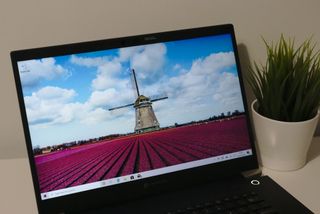
The keyboard tore me apart. I enjoyed typing away thousands of words for this review, but it surprised me at first by how compact it is. There's plenty of space available, but Dynabook chose to design a rather small keyboard. I'd say it's a little too small. The worst part is you don't even get a full numberpad, which would have made it an easier pill to swallow.
If you're a fan of smaller keyboards, you'll feel right at home here, but overall I'd like to see it improved with better lighting, keycap lettering (secondary functions are a little too faint to read), with a larger footprint. As for the touchpad, it's not Precision driver-backed and instead makes use of Synaptics' own software. It's actually pretty good but showcases just how oily your fingers get through the day. I'm not a fan of the fingerprint reader since it's a swipe and thus a little less accurate.
The IR camera worked flawlessly, however, and the shutter is a nice touch.
Should you buy Dynabook Tecra X50-F?
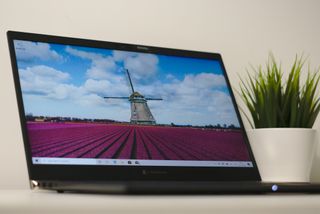
Whether you should buy the Dynabook Tecra X50-F is a tough call to make. Dynabook is up against some considerable competition in this segment, including the excellent Dell XPS 15, not to mention other laptops that can be used in the office. It's an attractive prospect for professionals given the security features and custom BIOS, but the noisy fan and sub-par battery life makes for a difficult recommendation.
If you're only interested in sheer performance and a secured environment, the Dynabook Tecra X50-F is a good offering. It's just a shame since Dynabook (Sharp and Toshiba) could have knocked this out the park with an all-rounded professional notebook. I'd potentially hold out for a refresh, which would hopefully address these shortcomings.

Rich Edmonds was formerly a Senior Editor of PC hardware at Windows Central, covering everything related to PC components and NAS. He's been involved in technology for more than a decade and knows a thing or two about the magic inside a PC chassis. You can follow him on Twitter at @RichEdmonds.
